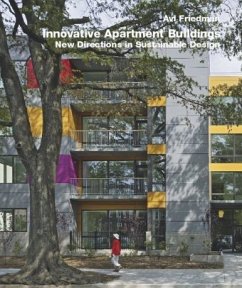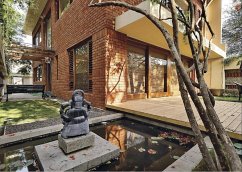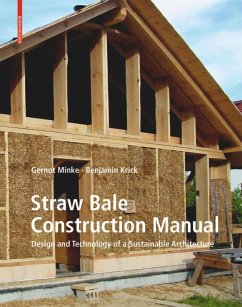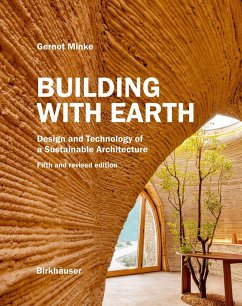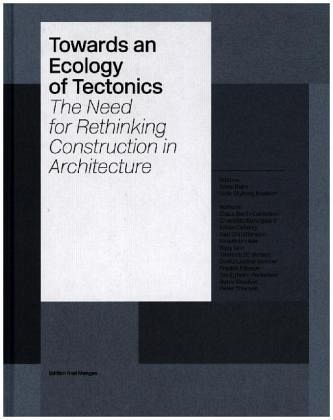
Towards an Ecology of Tectonics
The Need for Rethinking Construction in Architecture
Herausgegeben: Beim, Anne; Madsen, Ulrik Stylsvig
Versandkostenfrei!
Versandfertig in 2-4 Wochen
59,99 €
inkl. MwSt.

PAYBACK Punkte
30 °P sammeln!
The global resources situation and the climate crisisare amongst the biggest challenges faced bymankind today. In the years to come, these issueswill no doubt have an influence on societal evolution,on urban and rural land development, andhow we define our cultural identities. These andrelated issues will be reflected in the world of architecture.In recent years many countries with highenergy consumption have made the energy-relatedrequirements for buildings more stringent; thenew rules apply to the resources used for constructionas well as to those used in the operationof buildings. In the fu...
The global resources situation and the climate crisisare amongst the biggest challenges faced bymankind today. In the years to come, these issueswill no doubt have an influence on societal evolution,on urban and rural land development, andhow we define our cultural identities. These andrelated issues will be reflected in the world of architecture.In recent years many countries with highenergy consumption have made the energy-relatedrequirements for buildings more stringent; thenew rules apply to the resources used for constructionas well as to those used in the operationof buildings. In the future, these new requirementswill have a major impact on the design of buildings.It will not be sufficient merely to increase the insulationthickness or to make the building envelopemore airtight. Solutions of this type have an adverseimpact on the architectural design, on theconstruction practices, on the indoor environmentand on options for making buildings flexible so thatthey can be adapted for diverse uses over time.Equally important in terms of its impact on architecturalquality is the challenge posed by the continuousgrowth of industrialisation. The move fromcraft-based construction methods to computercontrolledproduction processes now used in industrialisedmanufacturing has resulted in strictstandards, established at design level, being imposedon the process as it takes place on thebuilding site, creating an 'assembly architecture'that no longer depends on the locally availablematerials, on local cultural traditions or on thespecific physical context.In this book, ideas, design principles and practicesthat relate to tectonics in architecture are explored,and a series of themes are discussed in relationto various concepts of ecology. Ecology is,in this case, defined in its widest sense, which includesthe cycling of resources, systems of socialorganisation and the environmental context. Tectonics- a concept with a long tradition in architectureand architectural theory - is comparable toecology. It relates to the design and assembly ofstructural elements, and implies a holistic approachto materials, to construction technology and tothe design of structures. It is more than merely aninstrumental strategy: it extends into the poetic,which elevates it to the status of a cultural practice.This book is part of a research project conductedby leading academics associated with the RoyalDanish Academy of Fine Arts School of Architecture,the Aarhus School of Architecture and theDanish Building Research Institute. With a collectionof 13 essays by academic experts and practicingarchitects the book provides the first comprehensiverepresentation of contemporary tectonicthought and practices in architecture.
Dieser Artikel kann nur an eine deutsche Lieferadresse ausgeliefert werden.







